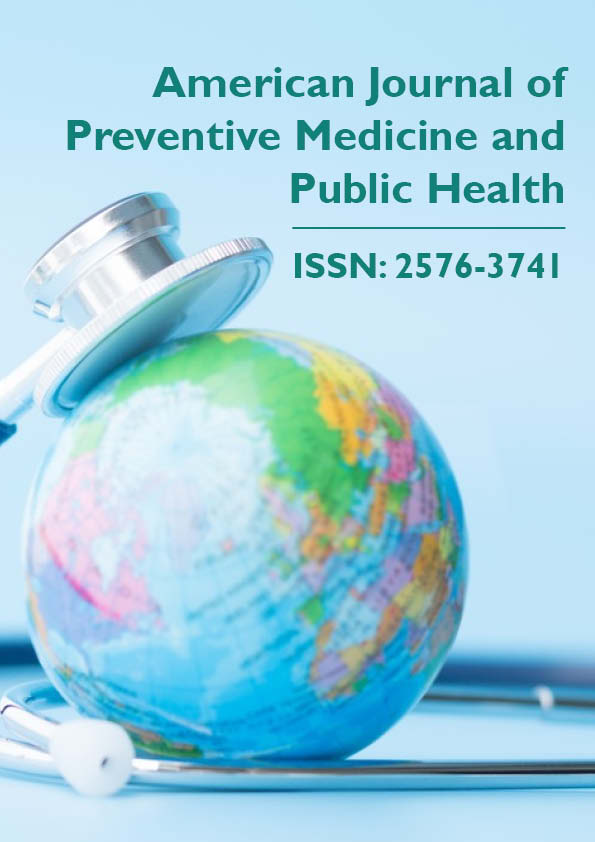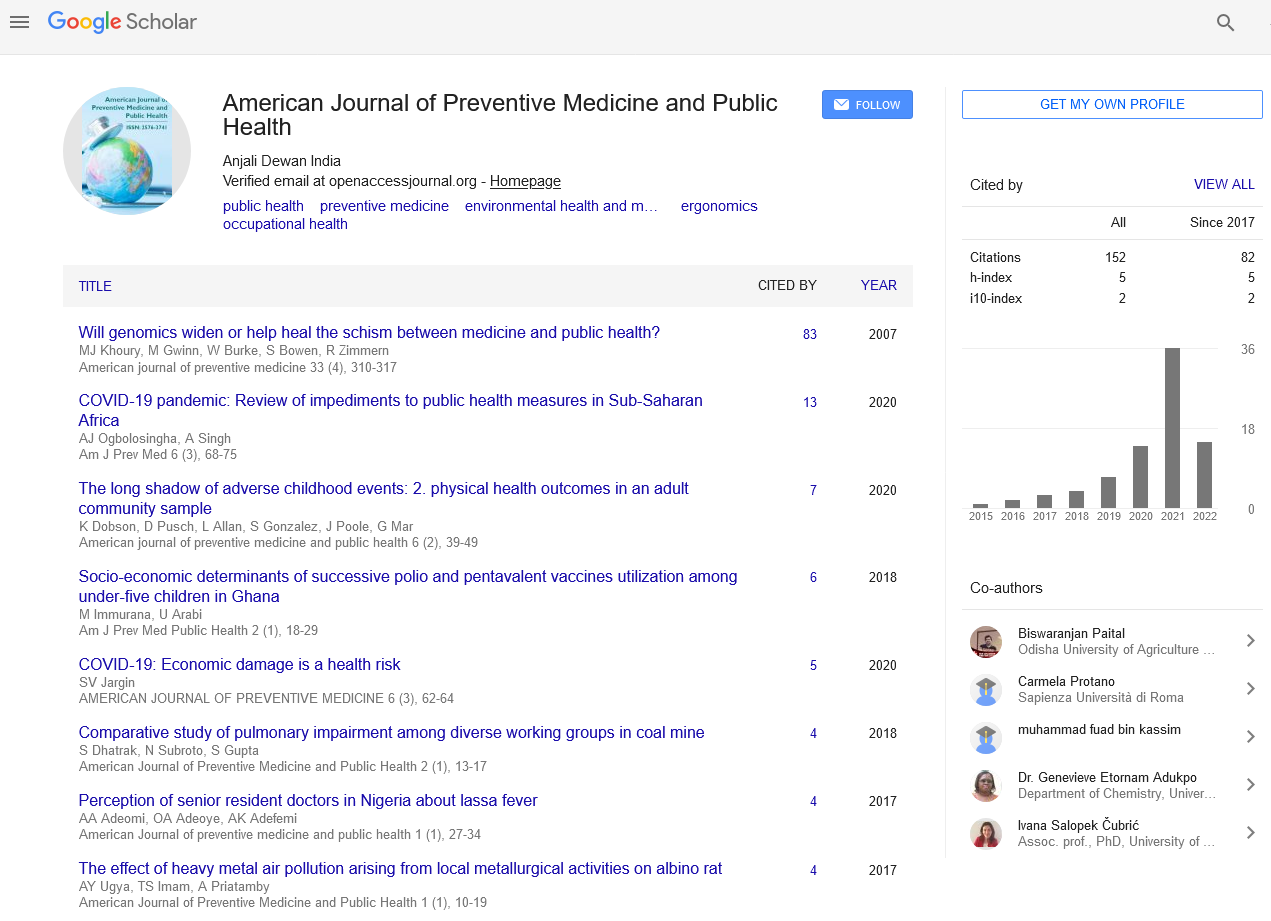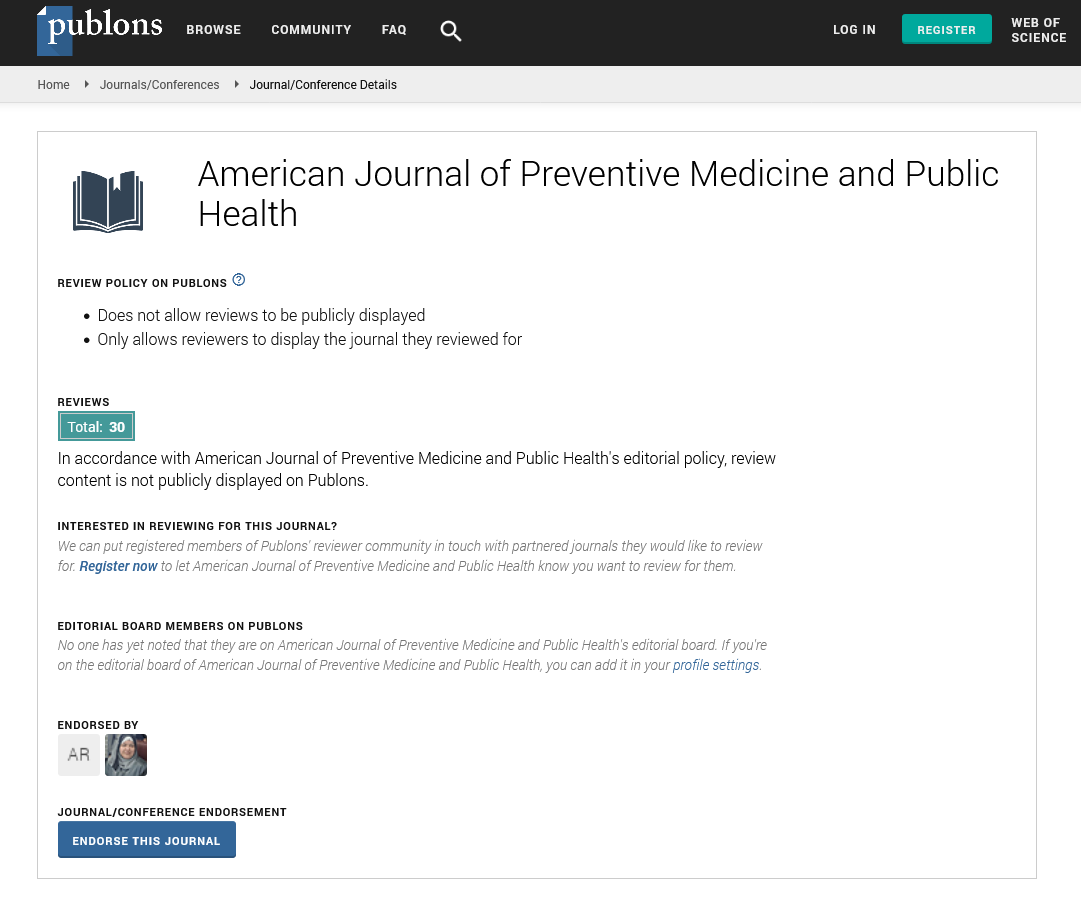Opinion - American Journal of Preventive Medicine and Public Health (2022)
Characterization of Vaccination Rates in COVID-19 Outbreak
Maneze Della*Maneze Della, Department of Paediatric Otolaryngology, Head and Neck Surgery, Starship Children’s Hospital, Auckland, New Zealand, Email: dellamane02ze@gamil.com
Received: 07-Nov-2022, Manuscript No. AJPMPH-22-83035; Editor assigned: 09-Nov-2022, Pre QC No. AJPMPH-22-83035(PQ); Reviewed: 25-Nov-2022, QC No. AJPMPH-22-83035; Revised: 01-Dec-2022, Manuscript No. AJPMPH-22-83035(R); Published: 08-Dec-2022
Description
This commentary summarizes current challenges for routine use of vaccines in the context of the COVID-19 pandemic and makes recommendations on how to increase uptake. To implement these recommendations, the paper identifies evidence-based sources that can help healthcare professionals, policymakers, and communicators.
The use of the COVID-19 vaccines suboptimal in many countries. In the European Union, for example, coverage is 72%, with countries where between 50% and 90% of the adult population is vaccinated twice. In North America, 65% are vaccinated twice, in low-middle-income countries, 56% are vaccinated twice. Immunity from infection or vaccination will decline significantly by the end of 2022, and third and fourth boosters are recommended. However, by mid-November, only 46% had received boosters in Europe (59% in the European Union), 42% in North America, and 17% in low-middle-income countries. Governments in the northern hemisphere, where colder temperatures are likely to bring a winter wave of COVID-19, face the challenge of promoting vaccination. This mission includes encouraging people to access immunization services, especially those from vulnerable and disadvantaged groups.
At the same time, it is important to achieve pre- COVID-19 coverage of other recommended vaccines - World Health Organization (WHO) and United Nations International Children’s Emergency Fund (UNICEF) has sounded the alarm, acknowledging the biggest failure in routine immunization. For three decades (WHO press release, 15 July). In addition, in Europe, unprecedented pressure to protect refugees from Ukraine means that some countries will face additional challenges in maintaining respectable health care systems. Reliable and efficient operation. After living through nearly 3 years of the pandemic, people are not naive in terms of immunity as well as psychology. Therefore, future vaccination protocols and communication initiatives must fully consider each individual’s infection and vaccination experience. In the meantime, the impact of past health policies must also be considered. In this article, we will summarize the three major challenges before making recommendations to address them. We conclude by providing a number of resources to help implement the recommendations.
Current challenges
A major challenge is that among unvaccinated adults, most do not want to be vaccinated; meanwhile, many children remain unvaccinated due to the reluctance of guardians. In some countries, despite efforts to improve immunization access and motivation, many vulnerable populations still need immunization (e.g. the elderly, people living in disadvantaged areas), migrants, homeless people, people living inprison). Key barriers to vaccine use include doubts about vaccine safety or effectiveness, lack of trust in authorities, and administrative and logistical difficulties. These problems can be exacerbated by exposure to misinformation, information overload, or conflicting information. A second challenge is that individuals increasingly have personal experience with the virus and vaccination7, which can reduce their willingness to be vaccinated. Many people who have been infected will experience COVID-19 as a non-serious illness and therefore may not feel the need to get vaccinated after they recover. However, current evidence suggests that administering at least one dose of vaccine after infection with SARS CoV-2 significantly reduces the risk of reinfection. Among the majority of vaccinated individuals, adverse health events occurring shortly after vaccination can be attributed to vaccination, although temporal proximity itself does not imply causation.
Media discussions about the “post-vaccination” syndrome and the extent to which adverse events are well-reported may also cast doubt on the safety of the vaccine. These questions may discourage receiving additional doses, especially when individuals assume they have acquired some immunity.
Third, policy changes may reduce the importance of vaccination. For example, some countries, e.g. Germany discussed the mandatory regulations but did not pass them. Other countries, such as Austria, have abandoned mandatory COVID-19 policies before implementing them. For example, France put an extra shot on the green pass and only missed the green pass shortly after. Meanwhile, authorities often let regulations expire or fail to enforce policies. In Germany, for example, mandatory vaccination regulations for healthcare professionals have been relaxed in several federal states, which maybe partly due to a lack of healthcare workers. Such changes may have sent mixed messages about the need and benefits of vaccination, both to the public and to health care workers, the group most often targeted by mandatory regulations.
Copyright: © 2022 The Authors. This is an open access article under the terms of the Creative Commons Attribution Non Commercial Share Alike 4.0 (https://creativecommons.org/licenses/by-nc-sa/4.0/). This is an open access article distributed under the terms of the Creative Commons Attribution License, which permits unrestricted use, distribution, and reproduction in any medium, provided the original work is properly cited.







